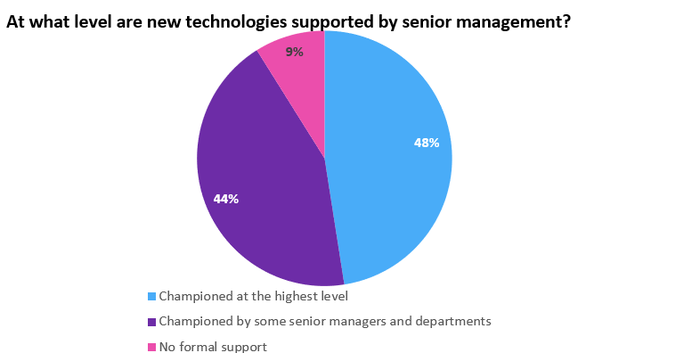Small-Medium Businesses Challenged by Lack of In-House Talent
It’s just one of the findings in a survey of more than 200 small and medium businesses conducted by IoT World Today and AI Business

While Internet of Things (IoT) and artificial intelligence (AI) technology deployment is rising across industries, the need for a workforce with the proper skills is a challenge for some businesses.
The talent challenge is one of the findings in a survey of more than 200 small and medium businesses conducted by IoT World Today and AI Business.
Across industries, the lack of in-house expertise is the top challenge, followed by lack of budget.
Smaller businesses were found to struggle with talent more than larger companies.

More than four in 10 smaller businesses (those making less than $50 million a year), see the lack of qualified in-house expertise as their top challenge. Fewer than a third (32%) of larger businesses (those making $50 million to $1 billion) rate in-house expertise as their major challenge.
By region, the lack of qualified, in-house personnel was the number one issue for businesses in North America, with more than 40% of businesses identifying it as their top concern.
This is significantly higher than in other regions, with businesses in Europe ranking lack of talent as their sixth largest concern, behind lack of data, lack of budget and lack of strategy.
New technology at larger companies is championed at the highest levels of senior management (59%) compared to the high-level support provided at smaller companies (49%).
For technology deployment, there was a relatively even split, with more than a third (38%) of businesses having an even mix of internal and external development, more than third (35%) using internal development and more than a quarter (27%) mostly purchasing technology from outside organizations.

By company size, almost the same number of smaller and larger companies purchase technology from outside organizations.
The primary desired outcome of businesses’ use of new technologies is to increase revenue (24%), improve customer experience (22%) and improve employee efficiency (19%). The last desired outcome was to prove a return on investment (9%).
As might be expected for having metrics in place to measure the success of technology initiatives, more than half (52%) of larger companies have metrics in place for all uses cases compared to fewer than a third (30%) of smaller companies.
Coming Next: Technology adoption barriers in small to medium-sized businesses
About the Author
You May Also Like








